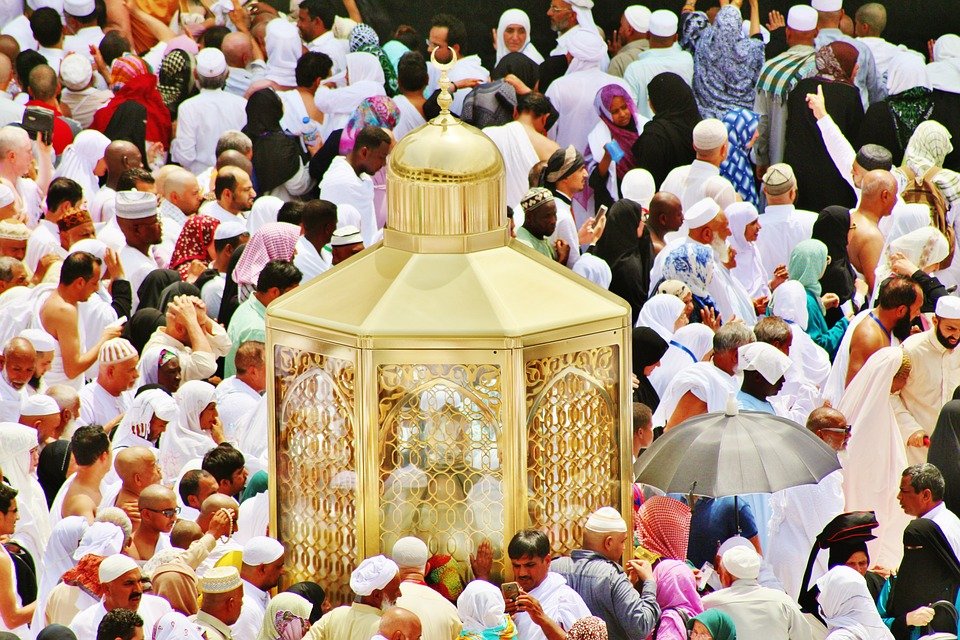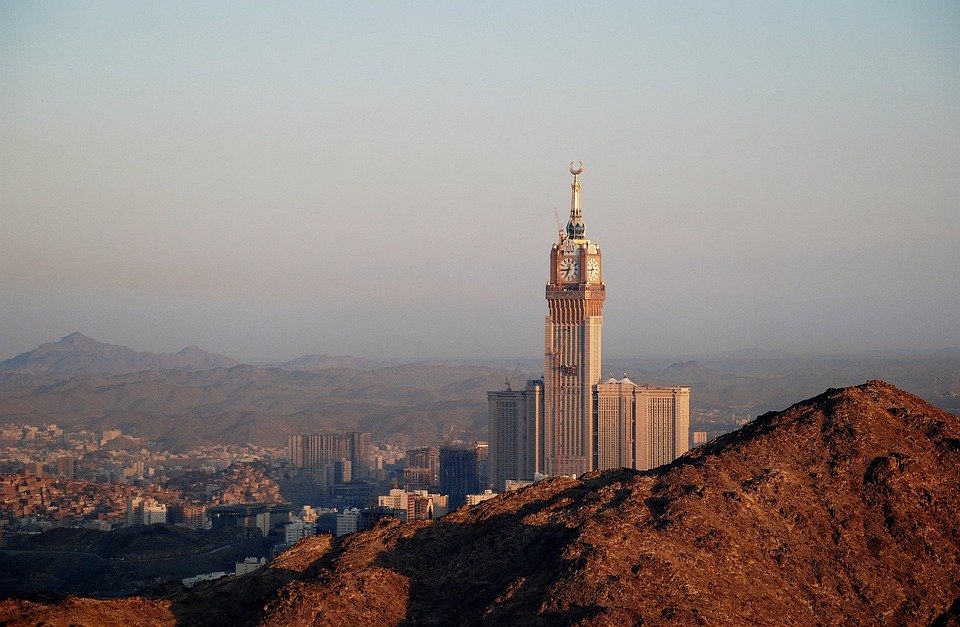You are here to read: What Is the First Ritual of Hajj? A Comprehensive Guide – A Thoughtfully Written Guide Offering Spiritual Wisdom and Travel Advice for Every Pilgrim who is going on holy journey of Hajj or Umrah.
What is the first ritual of Hajj? This question often arises as pilgrims prepare for one of the most significant events in their spiritual lives. The first ritual is known as “Ihram,” where pilgrims enter a state of spiritual purity and wear specific garments. In this article, you will find a proper guide to understanding the intricacies of this ritual, its requirements, and its significance. I believe that by grasping the essence of “what is the first ritual of Hajj,” you can enrich your experience as you partake in this sacred journey.
Understanding the significance of what is the first ritual of Hajj is essential for any pilgrim. Ihram marks the beginning of Hajj and symbolizes purity and equality before God, as all participants wear similar clothing, fostering a sense of unity. We, at Airlinkhajjandumrah.com, bring you nine years of expertise in Umrah and Makkah and Madinah travel since 2016. I feel confident that our comprehensive guide on “What Is the First Ritual of Hajj? A Comprehensive Guide” will help you connect more deeply with your faith and the traditions of this holy pilgrimage.
What Is the First Ritual of Hajj? A Comprehensive Guide
Understanding Hajj
Hajj is one of the five pillars of Islam, essential for every Muslim who can physically and financially manage it. Millions of believers from all over the world converge on the holy city of Makkah every year. This spiritual event occurs at a specific time during the Islamic lunar month of Dhul-Hijjah. Hajj is not just a pilgrimage; it represents a profound act of devotion and unity, bringing together Muslims from diverse cultures and backgrounds.
The first ritual of Hajj takes place soon after participants arrive in Makkah. It’s a vital step that sets the tone for the entire pilgrimage. As this magnificent event unfolds, we see pilgrims dressed in simple white garments. These clothes symbolize purity and equality. Every participant is reminded of their sole purpose—to seek forgiveness from Allah and to perform acts of worship.
Entering the State of Ihram
Before arriving at Makkah, pilgrims must enter a state called Ihram. This unique condition reflects a mindset of spiritual purity and preparation. Men wear two simple white garments, while women wear modest attire, typically in white as well. This simple dress emphasizes humility and equality among all Muslims. In this state, pilgrims refrain from certain actions, such as cutting hair, using fragrances, and arguing.
Entering Ihram often involves making a specific intention to perform Hajj. Pilgrims recite a special prayer called the “Talbiyah,” which declares their commitment to respond to the call of Allah. This beautiful chant fills the air with a sense of reverence, and you can feel the unity among everyone. The state of Ihram plays a crucial role in focusing the mind and soul for the experiences that lie ahead.
The Kaaba: The House of Allah
One of the most significant moments in Hajj is when pilgrims first lay eyes on the Kaaba. Located at the heart of the Masjid al-Haram, the Kaaba is a cube-shaped structure that Muslims believe was built by Prophet Ibrahim and his son Ismail. As they approach it, many feel an overwhelming surge of emotions, from joy to reverence. The sight of the Kaaba can be breathtaking, and the atmosphere is filled with spirituality.
You're at the middle of this awesome post at AirlinkHajjandUmrah.com through: What Is the First Ritual of Hajj? A Comprehensive Guide. Keep reading, it gets better!
Upon reaching the Kaaba, pilgrims perform the first act of Hajj: Tawaf. This involves circling the Kaaba seven times in a counter-clockwise direction. As you walk, one can feel the energy of the crowd around you, all engaged in this sacred act. Each circuit signifies the believer’s devotion and unity with other Muslims. People often pray and reflect during Tawaf, creating a unique connection with Allah.
The Significance of Tawaf
Tawaf, the act of circling the Kaaba, carries immense significance. It symbolizes the believer’s love for Allah and spiritual dedication. The act serves as a reminder of the harmony and togetherness among Muslims, regardless of their nationality or background. Everyone stands shoulder to shoulder, all focused on the same goal—seeking Allah’s mercy and forgiveness.
As pilgrims complete each round, they often recite prayers and supplications, making this ritual a deeply personal experience. Some may wish for their families, others for peace in the world, but all share a common bond in their longing for spiritual growth. Tawaf is not just a physical act; it is an emotional and transformative experience.
The Role of Sa’i
After completing Tawaf, the next step involves Sa’i. This ritual commemorates the hurried search for water by Hagar, the wife of Prophet Ibrahim. She ran seven times between the hills of Safa and Marwah in search of water for her son, Ismail. Sa’i serves as a reminder of perseverance and faith. Pilgrims follow in Hagar’s footsteps, reflecting on her unwavering spirit.
As they walk back and forth between the two hills, pilgrims feel a connection to history and tradition. The Sa’i grounds serve as a powerful reminder of the struggles faced by previous generations. For many, this act is a deep reflection on life’s trials and the importance of faith in overcoming challenges. It emphasizes the notion of hope and trust in Allah’s provision.
The Spiritual Journey Begins
The first rituals of Hajj set the stage for a profound spiritual journey. They encompass tradition, humility, and devotion. As pilgrims complete Tawaf and Sa’i, they embark on a greater understanding of their faith. Each step during these rituals deepens their connection with Allah and the essence of Islam.
Participating in these initial acts prepares pilgrims for the following days filled with worship and reflection. The atmosphere is electrifying, as millions engage in heartfelt prayers and acts of devotion. These moments at the beginning of Hajj instill a sense of purpose, setting apart this time as sacred and impactful in their lives.
Conclusion: A Profound Experience
In conclusion, the first ritual of Hajj involves entering the state of Ihram, performing Tawaf, and completing Sa’i. Each of these acts carries rich meaning, connecting pilgrims to their faith and history. As they participate in these sacred rituals, they embrace unity, humility, and a deep sense of purpose. The spiritual journey of Hajj truly begins with these foundational acts, creating a lasting impact on their hearts and souls. Each moment spent in devotion brings believers closer to their Creator and instills a renewed sense of faith for years to come.
That wraps up What Is the First Ritual of Hajj? A Comprehensive Guide. Thanks for sticking with us till here! Share this: What Is the First Ritual of Hajj? A Comprehensive Guide with your friends.
Check our homepage at Air Link Hajj & Umrah for more awesome updates.
Some interesting posts are: 1: Umrah Mubarak, 2: When is Umrah closed 2026?, 3: When does Umrah start after Hajj 2026?
Mushu, an experienced Saudi Arabia traveler and writer, shares insightful tips and spiritual reflections to enhance Hajj and Umrah journeys for fellow pilgrims. He has been to Makkah and Madina from 2016 to 2023 many times and his posts will reflect this.







